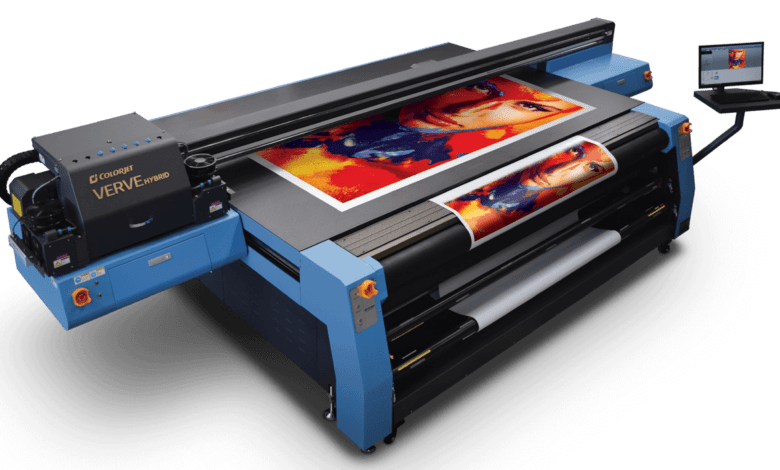What You Need to Know About Inkjet Printing

Inkjet printing is a versatile and widely used printing technology that has transformed how we produce images and text on various media. This comprehensive article will explore the fundamentals of inkjet printing, its history, types, mechanisms, applications, advantages, and challenges.
Introduction to Inkjet Printing
Inkjet printing is a type of computer printing that recreates a digital image by propelling ink droplets onto paper, plastic, or other substrates. Inkjet printers are the most commonly used type of printer and range from small, inexpensive consumer models to expensive professional machines.
History of Inkjet Printing
The development of inkjet printing started in the early 20th century, but it was not until the 1970s that the technology became commercially available. Initially, the technology was developed for marking and coding applications, but its potential for other uses quickly became apparent. In the 1980s, the technology advanced significantly with the introduction of the first consumer-level color inkjet printers.
How Inkjet Printers Work
Inkjet printers operate by ejecting tiny droplets of ink through microscopic nozzles to form characters and images. This process can be divided into two main types: continuous (CIJ) and drop-on-demand (DOD).
Continuous Inkjet
In CIJ, ink is emitted continuously from the print head and deflected onto the paper if needed. The deflection is typically controlled by electromagnetic fields. CIJ is fast and used in industrial applications where high speed and volume are necessary.
Drop-on-Demand
DOD is more common in consumer devices and involves ink squirting onto the paper only when needed. DOD can be further split into thermal DOD, where heat is used to create a bubble in the ink to force it out of the nozzle, and piezoelectric DOD, where a piezoelectric material changes shape when electrically charged to force the ink out.
Types of Inkjet Inks
Inkjet inks must have specific properties to function effectively in printers. The inks are mainly categorized into dye-based and pigment-based inks. Dye-based inks offer brilliant colors and are excellent for high-resolution prints but are less resistant to fading and water. At the same time, pigment-based inks are not as vibrant and provide better longevity and resistance to environmental factors.
Applications of Inkjet Printing
Inkjet technology is employed across various fields, extending beyond simple document printing:
- Photographic and Fine Art Printing: Inkjet is preferred for high-quality prints in photographic, fine art, and graphic design due to its ability to produce rich colors and fine details.
- Textile Industry: Inkjet printers are used in the textile industry for fabric design and patterns.
- Industrial Printing: From printing electronics to 3D objects and food, inkjet technology’s adaptability has made it suitable for numerous industrial applications.
Advantages of Inkjet Printing
The key benefits of inkjet printing include:
- Versatility: Able to print on various printing media including paper, plastic, canvas, or even textiles.
- High Quality: Produces sharp images and vibrant colors with excellent resolution.
- Cost-Effective: Inkjet printers have a lower upfront cost than other types of printers like laser printers.
- Ease of Use: Inkjet printers are typically easy to operate, making them ideal for home and small office use.
Challenges and Limitations
Despite its advantages, inkjet printing has its drawbacks:
- Cost of Ink: The cost of ink can be high, and some printers are designed to use only proprietary cartridges from the printer manufacturer, which can increase the cost of supplies.
- Maintenance: Inkjet printers require regular maintenance to prevent the ink from drying in the nozzles.
- Durability of Prints: Prints from dye-based inks can be less durable and prone to fading.
The Future of Inkjet Printing
Advances in inkjet technology continue to expand its applications. Developing new inks and printing technologies, such as UV-curable inks, has opened new markets and opportunities. Furthermore, the rise of digital printing has positioned inkjet as a critical player in the push toward more personalized, on-demand printing.
Conclusion
Inkjet printing remains a dynamic and evolving field that offers significant opportunities across many sectors. Its ability to combine quality, versatility, and cost-effectiveness makes it a preferred choice for consumers and professionals. As technology advances, it will be exciting to see how inkjet printing continues to impact our world. This comprehensive overview touches on the various aspects of inkjet printing, highlighting its evolution, mechanisms, and broad applications, illustrating its significance in the modern printing landscape.
This article is posted on Midnu.

